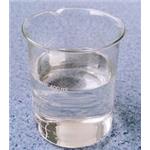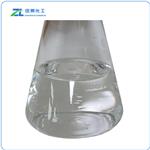Chemical Properties
Glycofurol is a clear, colorless, almost odorless liquid, with a bitter
taste; it produces a warm sensation on the tongue.
Uses
Used as solvent to dissolve water-insoluble compounds.
Uses
Glycofurol is used as a carrier device for drug delivery.
Production Methods
Glycofurol is prepared by the reaction of tetrahydrofurfuryl alcohol
with ethylene oxide (followed by a special purification process in
the case of Glycofurol 75).
Pharmaceutical Applications
Glycofurol is used as a solvent in parenteral products for
intravenous or intramuscular injection in concentrations up to
50% v/v. It has also been investigated, mainly in animal studies,
for use as a penetration enhancer and solvent in topical and
intranasal formulations. Glycofurol has also been used at 20%
v/v concentration in a rectal formulation.
Biological Activity
Liquid glycofurol can readily transform into gel systems with excellent elasticity due to which, it can be used as a medium to dissolve water-insoluble drugs.
Safety
Glycofurol is mainly used as a solvent in parenteral pharmaceutical
formulations and is generally regarded as a relatively nontoxic and
nonirritant material at the levels used as a pharmaceutical excipient.
Glycofurol can be irritant when used undiluted; its tolerability is
approximately the same as propylene glycol.
Glycofurol may have an effect on liver function and may have a
low potential for interaction with hepatoxins or those materials
undergong extensive hepatic metabolism.
LD50 (mouse, IV): 3.5 mL/kg
storage
Stable if stored under nitrogen in a well-closed container protected
from light, in a cool, dry place.
Incompatibilities
Incompatible with oxidizing agents.
Regulatory Status
Included in parenteral medicines licensed in Europe.




